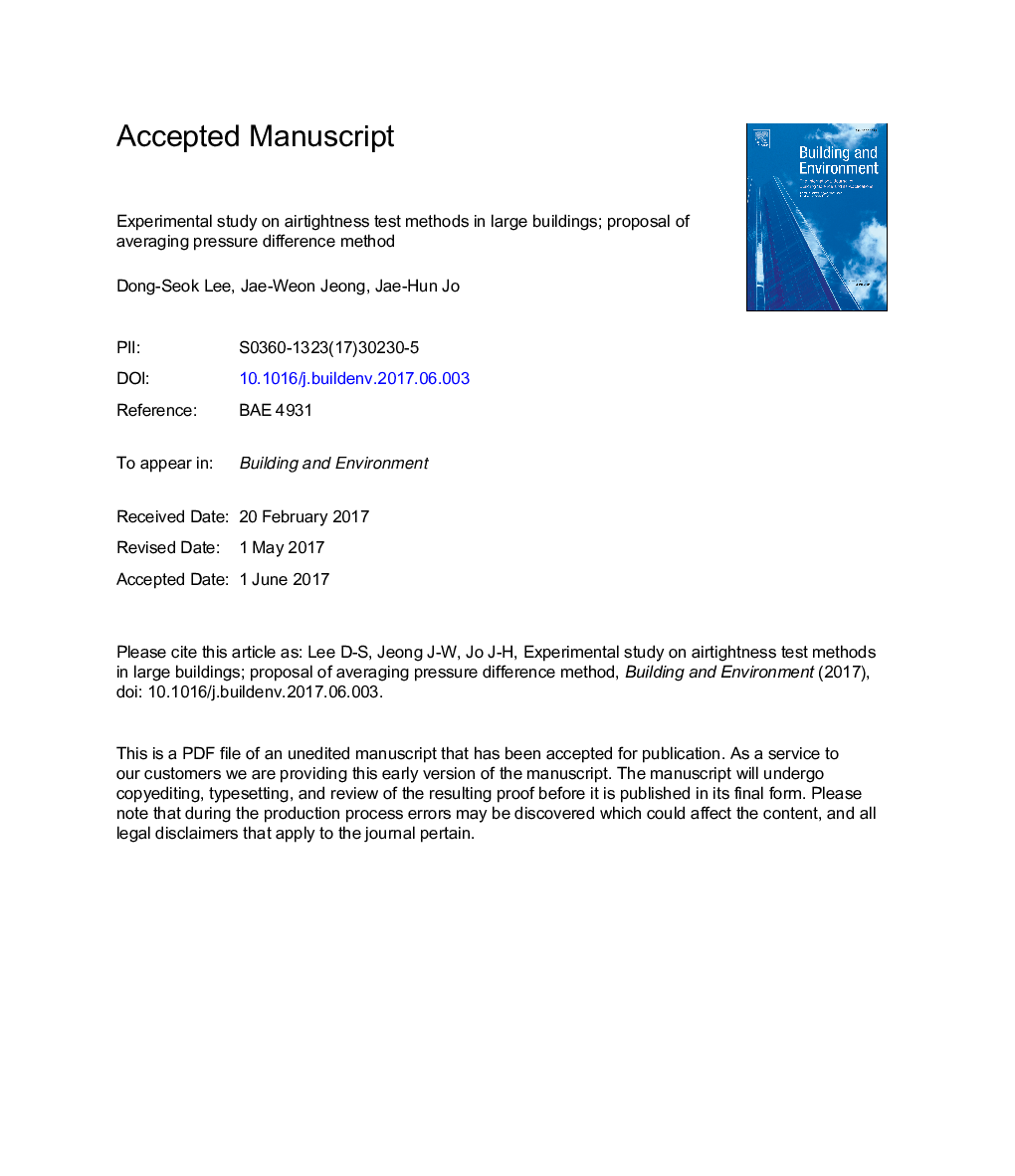| Article ID | Journal | Published Year | Pages | File Type |
|---|---|---|---|---|
| 4911447 | Building and Environment | 2017 | 23 Pages |
Abstract
Airtightness measurement standards using the fan pressurization method are widely used for measuring residential units such as detached houses and apartment units. The measurement of airtightness for small buildings can be readily conducted through existing fan pressurization methods. However, it can be difficult to achieve accurate measurement results for large buildings, as the height and volume of the buildings are considerably increased. This paper empirically investigates factors that are to be considered in regard to airflow rate (Q) and pressure difference (ÎP), which are measurement values required for deriving more accurate airtightness values for large buildings. The specifications of the standards ISO 9972, EN 13829, ASTM E779, JIS A 2201, ATTMA TS 1, and CAN/CGSB 149.15 relating to Q and â³P are compared. Test conditions with respect to Q and â³P are discussed for large building airtightness measurements. In measuring airtightness, a method is proposed in which the pressure difference at each floor of the building is measured and an average pressure difference value is used. Experiments were conducted on two multi-story office buildings using the method based on measuring pressure difference according to existing standards in tandem with the proposed pressure difference measurement method. The results of the experimental study show that the vertical pressure distribution across the overall building envelope can be significantly different when a building is pressurized. The airtightness values may also be different according to the measurement methods. This paper demonstrates how important it is to derive accurate â³P values in measuring large building airtightness.
Related Topics
Physical Sciences and Engineering
Energy
Renewable Energy, Sustainability and the Environment
Authors
Dong-Seok Lee, Jae-Weon Jeong, Jae-Hun Jo,
